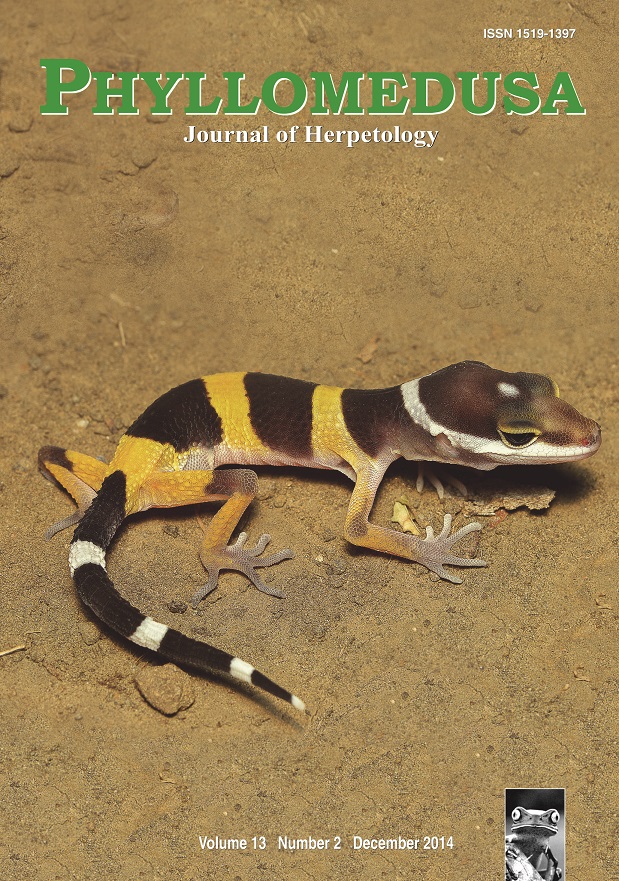A metapopulation of the lizard Anguis fragilis (Squamata: Anguidae) on a local scale in Dorset, Great Britain, as indicated by spatial distribution and movement
DOI:
https://doi.org/10.11606/issn.2316-9079.v13i2p91-98Keywords:
dispersal, male bias, mark-recapture, slow-worm.Abstract
A metapopulation is a group of spatially structured populations, consisting of distinct units (subpopulations) that are separated by space or barriers, and connected by dispersal movements. Evidence derived from Gaussian finite-mixture models and dispersal events suggests that slow-worms may exist in a metapopulation. The Gaussian finite-mixture models showed that slow-worms are aggregated into individual subpopulations; the movement data revealed that males are more likely to migrate than females and that they have the ability to travel sufficiently far to bridge subpopulations. Therefore, the evidence supports the metapopulation theory and that slow-worms exist in multiple small subpopulations instead of one large homogenous population.Downloads
Download data is not yet available.
Downloads
Published
2014-12-24
Issue
Section
Articles
License
All material originally published in Phyllomedusa belongs to Escola Superior de Agricultura Luiz de Queiroz - Universidade de São Paulo. All contents are under a license of Creative Commons BY-NC-ND.How to Cite
Haley, T. (2014). A metapopulation of the lizard Anguis fragilis (Squamata: Anguidae) on a local scale in Dorset, Great Britain, as indicated by spatial distribution and movement. Phyllomedusa: Journal of Herpetology, 13(2), 91-98. https://doi.org/10.11606/issn.2316-9079.v13i2p91-98



 Impact Factor (JCR): 0.600
Impact Factor (JCR): 0.600 CiteScore: 1.0
CiteScore: 1.0